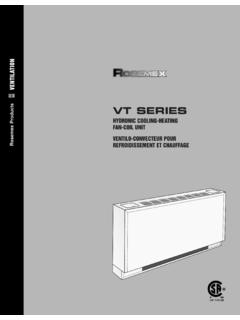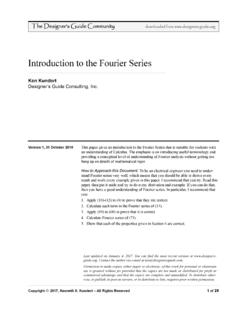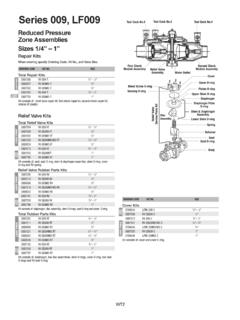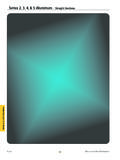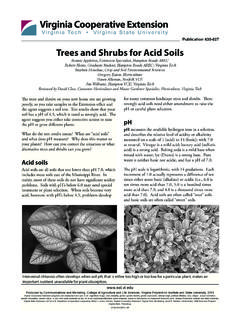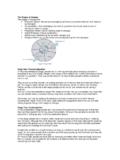Transcription of VVTT2266 SSEERRIIEESS FFUUZZZZYY …
1 VT26 series Installation Manual Fast Heat1 VVTT2266 SSEERRIIEESSFFUUZZZZYYEENNHHAANNCCEEDDPP IIDDCCOONNTTRROOLLLLEERRSSIINNSSTTRRUUCC TTIIOONNMMAANNUUAALL(( ))1. PANEL CONNECTION AND PANEL DISPLAY AND KEY CONFIGURATION ANDPARAMETERS USER PID OPTION AUTO TUNING THE CONTROLLER MANUAL ALARMERROR! BOOKMARK ALARM ALARM USING THEALARM FOR ERROR MESSAGE ANDTROUBLESHOOTING77. manual contains information for the installation, operation and tuning of your vertex VT26 seriesFUZZY ENHANCED auto-tuning microprocessor based controller. These controllers carry a two-yearfactory warranty. The vertex microprocessor controllers are FUZZY ENHANCED proportional +integral + derivative (PID) controllers that come in a variety of standard DIN sizes.
2 Theinput is configurableand allows selection of inputs between thermocouples and RTD s. You can also have 4~20 and other linearinputs as an option to be specified when ordering the controller. When ordering your controller you canchoose between Relay, SSR, Heat / Cool, 4~20 mA or other output signals. They have dual displays that showthe input (measured temperature) in the top digital display and the required set point in the lower. Thecontroller boasts a comprehensive range of other features that include auto/manual function and comesstandard with two configurable alarms. The controllers can be switched to manual and can work as timebased ratio out-put controllers in the event of thermocouple or input failures taking A HURRY ?
3 ??? vertex temperature controllers, although quiet sophisticated, can be very simple to use as well. In it ssimplest form, all you need to do is install it and get the wiring right, (YOU MUST READCONNECTIONS AND WIRING A, B + C BELOW) turn it on, check that thethermocouple type it iscorrect, (during the self test it will display the input type), make sure it is reading more or less the righttemperature, that the heating elements actually get hot when the C1 light is on and away you go. Noneed for laboriously reading this manual and changing and setting all the turn it onand when the system it is controlling has reached it s operating temperature, do an auto-tune asexplained in the section Tuning your vertex VT26 series controller You can also howeverexplore all the parameters and set and use it in any way you may MOUNTINGThe panel cut out sizes are shown below in table 1-1 Panel CutoutABFHD0127-01-0806 ModelABCDE abcdVT-4826484861004545+ + + + + + + + + + (Unit.)
4 Mm) CONNECTION AND WIRINGBEFORE WIRING PLEASE CHECK THE LABLE FOR CORRECT MODEL AND Mains Power inputThe controller can operate on any voltage between 90 ~ 264 VDC or VAC, 50/60 Hz. Power should be protected by a 2amp fuse or 1 amp circuit breaker. As an optional extra you can have 24 V AC or DC. Please be sure to order yourcontroller with this option should it be required. Note that the mains power terminals are T1 + T2 on the VT4826 and onT19 + T20 for the VT9626 and Sensor inputThis controller has selectable input making it possible to select any thermocouple or PT100 in the setup parameters fromthe face buttons. Do not run sensor cables adjacent to power carrying conductors as signal interference can take placeand distort the input.
5 The correct type of thermocouple extension lead wire or compensating cable must be used whenusing thermocouples. Ensure that the polarities of the thermocouple wires are correctly connected. The terminals usedfor the probe (thermocouple or PT100) are, VT4826 ..T7, T8 + T9 (T/C on T7 + T8) and for the VT9626 and VT4926, T8,T9 + T10 (T/C on T9 + T10)c. Controller outputs:The controller can have any one ofthe following output types. Be sure to check which one you require when outputs are Relay output (10A/240 VAC) This functions as a simple potential free switch. VT4826 use T11 + T12. VT4926 andVT9626 use T17 + T18 Solid State Relay output. (24 Vdc pulsed) This supplies a 24 Vdc signal to switch SSR s requiring a DC 3 ~ 32 Vdccontrol signal.
6 VT4826 use T11 (-ve) + T12 (+ve). VT4926 and VT9626 use T17 (+ve) + T18 (-ve) WIRING DIAGRAMVT-4826VT-7226VT-49 26/9426/9626 FHD0127-01-0806 Milli-amp output (4 ~ 20 mA). Max load 600 ohms This supplies a 24 Vdc driven 4~20 or 0~20 signal. VT4826 useT11 (-ve) + T12 (+ve). VT4926 and VT9626 use T17 (+ve) + T18 (-ve) 1 ~ 50mV, 1 ~ 5V, 0 ~ 10V also available as an FRONT PANEL DESCRIPTIONC ontroller Face indicationsa. A1 status LED indicator (Alarm 1 relay status LED)This LED is lit in red when the alarm 1 relay is A2 status LED indicator (Alarm 2 relay status LED)This LED is lit in red when the alarm 2 relay is activec. C1 status LED indicator (Main output 1 status LED)Ill uminates in green when the control output 1 is C2 status LED indicator (Control output 2 status LED)Illuminates in green when the control output 2 is AT status indicatorWhen the controller is auto tuning the rightmost lower decimalpoint in the PV display will blink.
7 Auto tuning may takefrom several minutes to several hours depending upon the process in MA status indicatorWhen the manual control mode is selected. The rightmost decimal on SV display will KEY FUNCTIONSET keyPress once to access the next configurable parameter within the level you are for 5 seconds to reset alarm timer if keyShift digits to be adjusted by up/down DISPLAY AND INDICATORPV (Process Value) Display Displays the actual measurement of the input. Displays the parameter index code when selected. Displays the error (Set Value) Display Displays the set value. (Required Setpoint) Displays the parameter data when selected. Displays the output percentage value when keyPress to decrease the set point or parameter keyPress to increase the set point or parameter the SET and UP keys once to return the normal keyPress the SET and SHIFT keys simultaneously for 5 seconds and then use the up and down keys to select theprogramming level required.
8 (ie: User, Soft, PID etc) Now press the SET key to enter that particular level and accessthe first the UP and DOWN keyssimultaneously for 5 seconds toaccess LnLo and LnHi CONFIGURATION AND PARAMETERS SETTINGAll configurable parameters are user friendly and clearly structured in three levels. To change level from one to the next,please presskeys for at least 5 seconds to access level selection. Use UP/DOWN key to select level. () level. () for Linear USER LEVELThe following parameters are listed in a default sequence. However any unused parameter can be removed andthe display sequence is configurable to simplify the operation.:Set point value required for control.
9 :Alarm 1 set point value in will be a timeset value while A1FU is set to or T. off andthe or on thechoice of unit defined by the 9999 ~ :Alarm 2 set point value in will be a timeset value while A2FU is set to or T. off andthe or on thechoice of unit defined by the 9999 ~ :Auto tune. Used to set Pb,ti,td (PID) parameters automatically using the auto tuning procedure will also tune the cooling PID parameters as well if your controller has that option installed. : Auto tuning is disabled. : Most commonly used auto tuning procedure. The PV is compared with SV during auto tuning. : Used when you do not wish the PV (measured temperature) to exceed the SV during auto tuning.
10 Theprocess of auto tuning is done at 10% below the set : Hand (manual)control. Used to enable or disable the manual mode. Care must be taken when using thisfunction as the output is set manually by the operator, and the controller will not make any automatic correctionsshould there be overshoot above the set value temperature. : Disable the manual mode : Enable the manual mode.: Output percentage. Indicating the % output set either by hand in manual or by the controller when controllingnormally.: Auto tune. Used to set Pb,ti,td (PID) parameters automatically using the auto tuning procedure will also tune the cooling PID parameters as well if your controller has that option SOFT LEVEL:Ramp rate for the process value to limit an abrupt Change of process.

